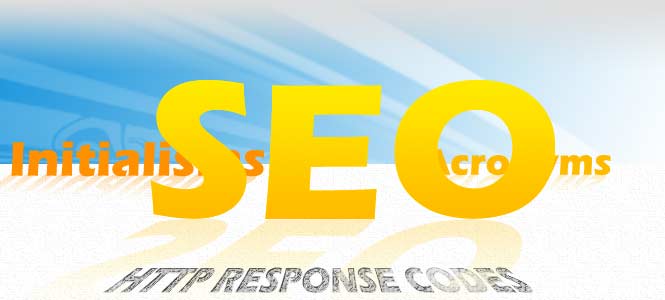[fusion_builder_container hundred_percent=”yes” overflow=”visible”][fusion_builder_row][fusion_builder_column type=”1_1″ last=”yes” spacing=”yes” center_content=”no” hide_on_mobile=”no” background_color=”” background_image=”” background_repeat=”no-repeat” background_position=”left top” hover_type=”none” link=”” border_position=”all” border_size=”0px” border_color=”” border_style=”” padding=”” margin_top=”” margin_bottom=”” animation_type=”” animation_direction=”” animation_speed=”0.1″ animation_offset=”” class=”” id=””][fusion_title size=”1″ content_align=”left” style_type=”single solid” sep_color=”” margin_top=”” margin_bottom=”” class=”” id=””]
On-site SEO: Refining Content to Improve Rankings
[/fusion_title][/fusion_builder_column][fusion_builder_column type=”1_6″ last=”no” spacing=”yes” center_content=”no” hide_on_mobile=”no” background_color=”” background_image=”” background_repeat=”no-repeat” background_position=”left top” hover_type=”none” link=”” border_position=”left” border_size=”0px” border_color=”” border_style=”solid” padding=”” margin_top=”” margin_bottom=”” animation_type=”0″ animation_direction=”down” animation_speed=”0.1″ animation_offset=”” class=”” id=””][fusion_separator style_type=”none” top_margin=”10″ bottom_margin=”” sep_color=”” border_size=”” icon=”” icon_circle=”” icon_circle_color=”” width=”” alignment=”center” class=”” id=””/][fusion_fontawesome icon=”fa-cogs” circle=”no” size=”40″ iconcolor=”#1391db” circlecolor=”” circlebordercolor=”” rotate=”” spin=”no” animation_type=”0″ animation_direction=”down” animation_speed=”1″ animation_offset=”” alignment=”right” class=”” id=””/][/fusion_builder_column][fusion_builder_column type=”5_6″ last=”yes” spacing=”yes” center_content=”no” hide_on_mobile=”no” background_color=”” background_image=”” background_repeat=”no-repeat” background_position=”left top” hover_type=”none” link=”” border_position=”all” border_size=”0px” border_color=”” border_style=”” padding=”” margin_top=”” margin_bottom=”” animation_type=”” animation_direction=”” animation_speed=”0.1″ animation_offset=”” class=”” id=””][fusion_text]
How you can boost the SEO value of your pages with onsite modifications to improve your organic ranking
[/fusion_text][/fusion_builder_column][/fusion_builder_row][/fusion_builder_container][fusion_builder_container background_color=”” background_image=”” background_parallax=”none” enable_mobile=”no” parallax_speed=”0.3″ background_repeat=”no-repeat” background_position=”left top” video_url=”” video_aspect_ratio=”16:9″ video_webm=”” video_mp4=”” video_ogv=”” video_preview_image=”” overlay_color=”” overlay_opacity=”0.5″ video_mute=”yes” video_loop=”yes” fade=”no” border_size=”0px” border_color=”” border_style=”” padding_top=”20″ padding_bottom=”20″ padding_left=”” padding_right=”” hundred_percent=”no” equal_height_columns=”no” hide_on_mobile=”no” menu_anchor=”” class=”” id=””][fusion_builder_row][fusion_builder_column type=”1_1″ background_position=”left top” background_color=”” border_size=”” border_color=”” border_style=”solid” spacing=”yes” background_image=”” background_repeat=”no-repeat” padding=”” margin_top=”0px” margin_bottom=”0px” class=”” id=”” animation_type=”” animation_speed=”0.3″ animation_direction=”left” hide_on_mobile=”no” center_content=”no” min_height=”none”][fusion_text]You’ve created a new page to target different keyword terms. You carried out some keyword research, looked into the competition, and wrote at least 400 words that answers readers’ potential questions. But after a few weeks your page drops in at #250 and shows no signs of moving. What is going on?
The simple answer is that Google has decided that your page doesn’t meet their requirements as to what they believe would satisfy user intent.
The problem is that to appropriately satisfy user intent for a particular search term, there are thousands of conditions that need to be considered. However, it isn’t really as difficult as going through a list of 999 conditions in a spreadsheet and ticking each one off in turn; you can refine your content to improve rankings by bearing a few simple points in mind.[/fusion_text][/fusion_builder_column][fusion_builder_column type=”1_1″ background_position=”left top” background_color=”” border_size=”” border_color=”” border_style=”solid” spacing=”yes” background_image=”” background_repeat=”no-repeat” padding=”” margin_top=”0px” margin_bottom=”0px” class=”” id=”” animation_type=”” animation_speed=”0.3″ animation_direction=”left” hide_on_mobile=”no” center_content=”no” min_height=”none”][fusion_title size=”2″ content_align=”left” style_type=”default” sep_color=”” margin_top=”50″ margin_bottom=”50″ class=”” id=””]
Create content for people
[/fusion_title][/fusion_builder_column][fusion_builder_column type=”3_4″ last=”no” spacing=”yes” center_content=”no” hide_on_mobile=”no” background_color=”” background_image=”” background_repeat=”no-repeat” background_position=”left top” hover_type=”none” link=”” border_position=”all” border_size=”0px” border_color=”” border_style=”” padding=”” margin_top=”” margin_bottom=”” animation_type=”” animation_direction=”” animation_speed=”0.1″ animation_offset=”” class=”” id=””][fusion_text]This one is something that is continuously shouted about, to the point of being clichéd, but unfortunately, still needs to be.
Back in the old days, many website owners created on-site web content that was purely for the search engines. They copied content from other sites, wrote keyword stuffed articles and hired writers who would work for pennies to produce poor and often unreadable content, just to serve as a base for their spammy backlinks to point to.
What might be surprising to some is that this still happens. A lot. And, in the short term, for some niche industries, sadly, it still works.[/fusion_text][/fusion_builder_column][fusion_builder_column type=”1_4″ last=”yes” spacing=”yes” center_content=”no” hide_on_mobile=”no” background_color=”” background_image=”” background_repeat=”no-repeat” background_position=”left top” hover_type=”none” link=”” border_position=”all” border_size=”0px” border_color=”” border_style=”” padding=”” margin_top=”” margin_bottom=”” animation_type=”” animation_direction=”” animation_speed=”0.1″ animation_offset=”” class=”” id=””][fusion_imageframe lightbox=”no” lightbox_image=”” style_type=”none” hover_type=”none” bordercolor=”” bordersize=”0px” borderradius=”0″ stylecolor=”” align=”none” link=”” linktarget=”_self” animation_type=”0″ animation_direction=”down” animation_speed=”0.1″ animation_offset=”” hide_on_mobile=”no” class=”” id=””]  [/fusion_imageframe][/fusion_builder_column][fusion_builder_column type=”1_1″ background_position=”left top” background_color=”” border_size=”” border_color=”” border_style=”solid” spacing=”yes” background_image=”” background_repeat=”no-repeat” padding=”” margin_top=”0px” margin_bottom=”0px” class=”” id=”” animation_type=”” animation_speed=”0.3″ animation_direction=”left” hide_on_mobile=”no” center_content=”no” min_height=”none”][fusion_text]Thankfully, Google is able to find them and slap them down nowadays better than ever, but it isn’t stopping many people from trying it, and succeeding, at least for a few months.
[/fusion_imageframe][/fusion_builder_column][fusion_builder_column type=”1_1″ background_position=”left top” background_color=”” border_size=”” border_color=”” border_style=”solid” spacing=”yes” background_image=”” background_repeat=”no-repeat” padding=”” margin_top=”0px” margin_bottom=”0px” class=”” id=”” animation_type=”” animation_speed=”0.3″ animation_direction=”left” hide_on_mobile=”no” center_content=”no” min_height=”none”][fusion_text]Thankfully, Google is able to find them and slap them down nowadays better than ever, but it isn’t stopping many people from trying it, and succeeding, at least for a few months.
Modern on-page search optimisation has moved well away from things such as keyword density, and is more about contextual relationships, readability, search mediums, semantics, rich info, and so on.
As a website owner, it is your job to provide information for your readers/viewers. You shouldn’t be thinking solely about meeting any specific article length, keyword density, or particular heading structure. You need to think about communicating your topic as well as you can; using text, images, diagrams, examples, videos, and so on, so that the answers are clear and a user would not have to search elsewhere for information about that specific search topic.[/fusion_text][/fusion_builder_column][fusion_builder_column type=”1_1″ background_position=”left top” background_color=”” border_size=”” border_color=”” border_style=”solid” spacing=”yes” background_image=”” background_repeat=”no-repeat” padding=”” margin_top=”0px” margin_bottom=”0px” class=”” id=”” animation_type=”” animation_speed=”0.3″ animation_direction=”left” hide_on_mobile=”no” center_content=”no” min_height=”none”][fusion_title size=”2″ content_align=”left” style_type=”default” sep_color=”” margin_top=”50″ margin_bottom=”50″ class=”” id=””]
Quality AND Quantity
[/fusion_title][fusion_text]While it is important to write content that is of high quality; meeting Google’s semantic word relationship requirements, answering the expected and appropriate questions surrounding a given keyword term, making content easy to read and understand, and so on, you should also bear in mind that recent studies have shown a strong correlation with the amount of written content and the ability of that page to rank well for a given search term.
A recent study by Backlinko stated that they found:
“The average Google first page result contains 1,890 words.”
This doesn’t mean that you must write a 2,000-word article for each and every page. Obviously it very much depends on the keyword you are targeting, the information you want to provide, and the expectations of your visitors, amongst other things.
If you are optimising a category page on your e-commerce shop, a 2,000 word block of text might not provide the most effective way of meeting Google’s ranking requirements. Concurrently there could be situations where it very much will help to provide extensive written content.
Think about what your visitors are expecting to find when clicking on a search result, and whether additional information will help them meet their needs.[/fusion_text][/fusion_builder_column][fusion_builder_column type=”1_1″ background_position=”left top” background_color=”” border_size=”” border_color=”” border_style=”solid” spacing=”yes” background_image=”” background_repeat=”no-repeat” padding=”” margin_top=”0px” margin_bottom=”0px” class=”” id=”” animation_type=”” animation_speed=”0.3″ animation_direction=”left” hide_on_mobile=”no” center_content=”no” min_height=”none”][fusion_title size=”2″ content_align=”left” style_type=”default” sep_color=”” margin_top=”50″ margin_bottom=”50″ class=”” id=””]
Accept your own failings
[/fusion_title][fusion_text]Some of us aren’t very charismatic writers. Some of us find it hard to convey our thoughts on screen. And some of us aren’t able to find the words to express our opinions eloquently.
If you think you might be one of those people, or the engagement stats on your site are suggesting this, suck it up and accept it. Hire a writer.
There is no shame in hiring somebody to rewrite your words in a more engaging and articulate way. This is purely common sense. Professional writers do this on a daily basis, and have the expertise to make the most of your ideas, without taking anything away.[/fusion_text][/fusion_builder_column][fusion_builder_column type=”1_1″ background_position=”left top” background_color=”” border_size=”” border_color=”” border_style=”solid” spacing=”yes” background_image=”” background_repeat=”no-repeat” padding=”” margin_top=”0px” margin_bottom=”0px” class=”” id=”” animation_type=”” animation_speed=”0.3″ animation_direction=”left” hide_on_mobile=”no” center_content=”no” min_height=”none”][fusion_title size=”2″ content_align=”left” style_type=”default” sep_color=”” margin_top=”50″ margin_bottom=”50″ class=”” id=””]
Visually Communicate your Thoughts
[/fusion_title][fusion_text]Writing is just one single way of communicating a message. Sometimes text isn’t enough. Utilize other forms of visual communication: photos, images, diagrams, videos, gifs, and so on. Remember; your primary aim is to communicate your message accurately and succinctly, with a focus on readability. Use rich markup data for videos, as well as captions where possible.
Don’t be afraid to borrow an image from another blog or website, but remember to either ask permission, and/or post a like to the source (an <rel=“nofollow”> link might be appropriate here). Alternatively, pay for stock images from sites like Envato, or the usual suspects of Shutterstock and istockphoto.[/fusion_text][/fusion_builder_column][fusion_builder_column type=”1_1″ background_position=”left top” background_color=”” border_size=”” border_color=”” border_style=”solid” spacing=”yes” background_image=”” background_repeat=”no-repeat” padding=”” margin_top=”0px” margin_bottom=”0px” class=”” id=”” animation_type=”” animation_speed=”0.3″ animation_direction=”left” hide_on_mobile=”no” center_content=”no” min_height=”none”][fusion_title size=”2″ content_align=”left” style_type=”default” sep_color=”” margin_top=”50″ margin_bottom=”50″ class=”” id=””]
Link Out!
[/fusion_title][fusion_text]If you are discussing an important issue, but are using some industry specific language that might well be great for the whole ‘semantics’ thing, but yet might confuse some readers, link out to another article that describes this issue, rather than going off on a tangent unrelated to your topic. Remember to consider who you are linking to, however. Obviously as an ecommerce site, you don’t really want to be linking to competitors, and if the site you’re linking to is an unknown (see here), use an <rel=”nofollow”> link attribute in the code.
For example:
a href="https://en.wikipedia.org/wiki/Search_engine_optimization" target="_blank" rel="nofollow"
[/fusion_text][/fusion_builder_column][fusion_builder_column type=”1_1″ background_position=”left top” background_color=”” border_size=”” border_color=”” border_style=”solid” spacing=”yes” background_image=”” background_repeat=”no-repeat” padding=”” margin_top=”0px” margin_bottom=”0px” class=”” id=”” animation_type=”” animation_speed=”0.3″ animation_direction=”left” hide_on_mobile=”no” center_content=”no” min_height=”none”][fusion_title size=”2″ content_align=”left” style_type=”default” sep_color=”” margin_top=”50″ margin_bottom=”50″ class=”” id=””]
Edit. Then Rewrite. Then Wait. Then Edit Again.
[/fusion_title][fusion_text]Once you’ve created your new blog post or page, and then edited it at least once with a critical eye, and sent it over to a friend to take a look at, take a step back.
I find that if I come back to a post after a day or so, I get a few more ideas, or I’m able to better phrase a sentence or paragraph which improves the readability of the piece.
So, put your keyboard down (or away?), start work on something else for a few hours, or just take a break and come back to it the next day for a final edit. Don’t rush things.[/fusion_text][/fusion_builder_column][fusion_builder_column type=”1_1″ background_position=”left top” background_color=”” border_size=”” border_color=”” border_style=”solid” spacing=”yes” background_image=”” background_repeat=”no-repeat” padding=”” margin_top=”0px” margin_bottom=”0px” class=”” id=”” animation_type=”” animation_speed=”0.3″ animation_direction=”left” hide_on_mobile=”no” center_content=”no” min_height=”none”][fusion_title size=”2″ content_align=”left” style_type=”default” sep_color=”” margin_top=”50″ margin_bottom=”50″ class=”” id=””]
Build That Chain
[/fusion_title][fusion_imageframe lightbox=”no” lightbox_image=”” style_type=”none” hover_type=”none” bordercolor=”” bordersize=”0px” borderradius=”0″ stylecolor=”” align=”center” link=”” linktarget=”_self” animation_type=”fade” animation_direction=”static” animation_speed=”0.1″ animation_offset=”top-into-view” hide_on_mobile=”no” class=”” id=””]  [/fusion_imageframe][fusion_separator style_type=”none” top_margin=”40″ bottom_margin=”” sep_color=”” border_size=”” icon=”” icon_circle=”no” icon_circle_color=”” width=”” alignment=”center” class=”” id=””/][fusion_text]The final consideration I’m going to suggest here is to build links. I know, I know, it’s not ‘Onsite’, but hear me out, because it really helps.
[/fusion_imageframe][fusion_separator style_type=”none” top_margin=”40″ bottom_margin=”” sep_color=”” border_size=”” icon=”” icon_circle=”no” icon_circle_color=”” width=”” alignment=”center” class=”” id=””/][fusion_text]The final consideration I’m going to suggest here is to build links. I know, I know, it’s not ‘Onsite’, but hear me out, because it really helps.
General ‘shoot me down’ statement:
‘Direct links to your internal pages will help to improve their rankings. Links to your main domain will also help sub-pages’ rankings.’
In fact, you need to build non-‘advertisement’, non-‘paid-for’ links from related and good quality websites.
This means a lot of web research and even more time sending out emails outreaching to bloggers and websites to suggest that your content might be relevant to their readers.
Personal blogs, while a great place to get links from, are a bit of a minefield. Due to how lucrative personal blogging is nowadays compared to the effort required, I would go so far as to suggest that the majority of personal blogs nowadays are built to generate income. This seems to be true in my experience, at least.
Most prolific bloggers own more than one blog, and often work in editing for other blogs, meaning that they are continuously receiving emails from companies wishing to generate web exposure. So, being in such a great position, with so much demand for ‘web exposure’, means that these bloggers can charge for the web space. Often this payment will come in the form of a free trial of a product, but many, more entrepreneurial bloggers shall we say, will ask for a monetary payment to go with this.
The cost? Well, anywhere from £50 to £500 for a ‘sponsored post’. In my opinion, £500 is asking a little too much for anything but the most popular personal blog*.
*I should say that Google is heavily against websites paying for links, but in this day and age, without a large brand backing, or an expensive online marketing campaign, it is something that is necessary, up to a point. A great blog with a solid and verifiable reader base that is closely related in context to your own website or post, which has very good standing in independent metric systems such as those offered by Moz, Ahrefs and Majestic, may well be worth the £500 outlay.
So, build links to your pages. Focus on building links from different websites to different pages on your site. Create content, then build links to it. Stay ‘ethical’; stay ‘white-hat’.[/fusion_text][/fusion_builder_column][fusion_builder_column type=”1_1″ background_position=”left top” background_color=”” border_size=”” border_color=”” border_style=”solid” spacing=”yes” background_image=”” background_repeat=”no-repeat” padding=”” margin_top=”0px” margin_bottom=”0px” class=”” id=”” animation_type=”” animation_speed=”0.3″ animation_direction=”left” hide_on_mobile=”no” center_content=”no” min_height=”none”][fusion_title size=”2″ content_align=”left” style_type=”default” sep_color=”” margin_top=”50″ margin_bottom=”50″ class=”” id=””]
A few TL;DR tips:
[/fusion_title][fusion_text]
- Your 400 word article might well answer the question in your mind, coming from somebody who is well aware of what they are writing about, but it might be necessary to ask for help from others to proofread or rewrite your work, just to see if there is clarity in your creation.
- Think of quality as well as quantity
- Use images in the form of diagrams, flowcharts, or photographs to explain your meaning, or just to break up a large block of text.
- Include embedded videos, where appropriate, to further help communication (even if they aren’t yours, you can still mention a source). Ensure videos don’t play on page load, as this can annoy people very quickly!
- Don’t be afraid to link to external websites to help your readers. After all, helping your readers is your primary intent. Just be sure to remember that if a site isn’t a particular authority on a subject, then you can use the <rel=”nofollow” >link attribute to prevent any potential issues.
[/fusion_text][/fusion_builder_column][/fusion_builder_row][/fusion_builder_container]




